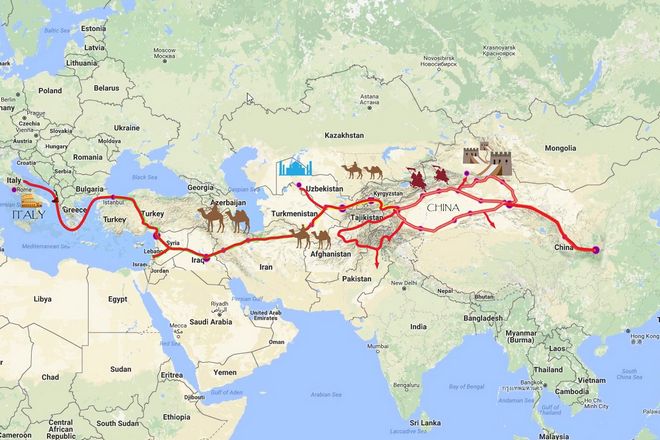In the annals of history, few phenomena have captivated the imagination and shaped the destiny of civilizations like the Silk Road. Spanning thousands of miles across the vast expanse of Eurasia, this ancient network of trade routes served as the lifeline of commerce, culture, and exchange between East and West for centuries. Today, as we trace the footsteps of merchants, adventurers, and scholars along this fabled path, we uncover a tapestry of stories that continue to resonate through the corridors of time.
The Origins of the Silk Road
The Silk Road emerged from the intermingling of diverse cultures and civilizations that flourished along its route. It owes its name to the prized commodity that first captured the attention of traders: silk. Produced exclusively in China, silk became synonymous with luxury and opulence in the West, driving demand and laying the foundation for a vast network of trade.
A Nexus of Commerce and Culture
Beyond silk, the Silk Road facilitated the exchange of a plethora of goods, from spices and precious metals to exotic fruits and textiles. However, its significance transcended mere commerce. Along its winding paths, merchants traded not only goods but also ideas, religions, and technologies, fostering a rich tapestry of cultural exchange and cross-fertilization.
The Silk Road’s Impact on Civilization
The impact of the Silk Road on the civilizations it touched was profound and far-reaching. In China, it spurred the growth of cities such as Xi’an and Chang’an, which served as vital hubs of trade and cultural exchange. In the West, cities like Samarkand and Constantinople blossomed into vibrant centers of commerce and learning, serving as gateways to the riches of the East.
Cultural Exchange and Innovation
One of the most enduring legacies of the Silk Road is its role in fostering cultural exchange and innovation. From the spread of Buddhism and Islam to the transmission of knowledge in fields such as astronomy, mathematics, and medicine, the Silk Road acted as a conduit for the exchange of ideas that transformed societies and reshaped the course of history.
The Decline and Legacy of the Silk Road
The decline of the Silk Road was precipitated by a combination of factors, including the rise of maritime trade routes, political upheaval, and the onset of the Black Death. By the 15th century, the once-thriving arteries of commerce had fallen into disuse, fading into obscurity.
Yet, the legacy of the Silk Road endures. Its impact on global trade, cultural diffusion, and the interconnectedness of civilizations reverberates through the ages. Today, as we stand on the shoulders of our ancestors, we are reminded of the enduring power of human enterprise and the transformative potential of cross-cultural exchange.
Rediscovering the Silk Road
In recent decades, efforts to revive the spirit of the Silk Road have gained momentum. Initiatives such as China’s Belt and Road Initiative seek to revitalize ancient trade routes and foster greater economic cooperation between East and West. As we embark on this new chapter in the history of the Silk Road, we are reminded of the timeless lessons it imparts: the importance of connectivity, cooperation, and mutual understanding in an ever-changing world.
Conclusion
As we reflect on the epic journey of the Silk Road, we are reminded of the enduring legacy of human ingenuity and resilience. From its humble origins as a trade route for silk to its transformation into a crucible of cultural exchange and innovation, the Silk Road remains a testament to the boundless potential of human endeavor. As we navigate the complexities of the modern world, may we draw inspiration from the spirit of the Silk Road – a beacon of hope, unity, and discovery in an interconnected world.


